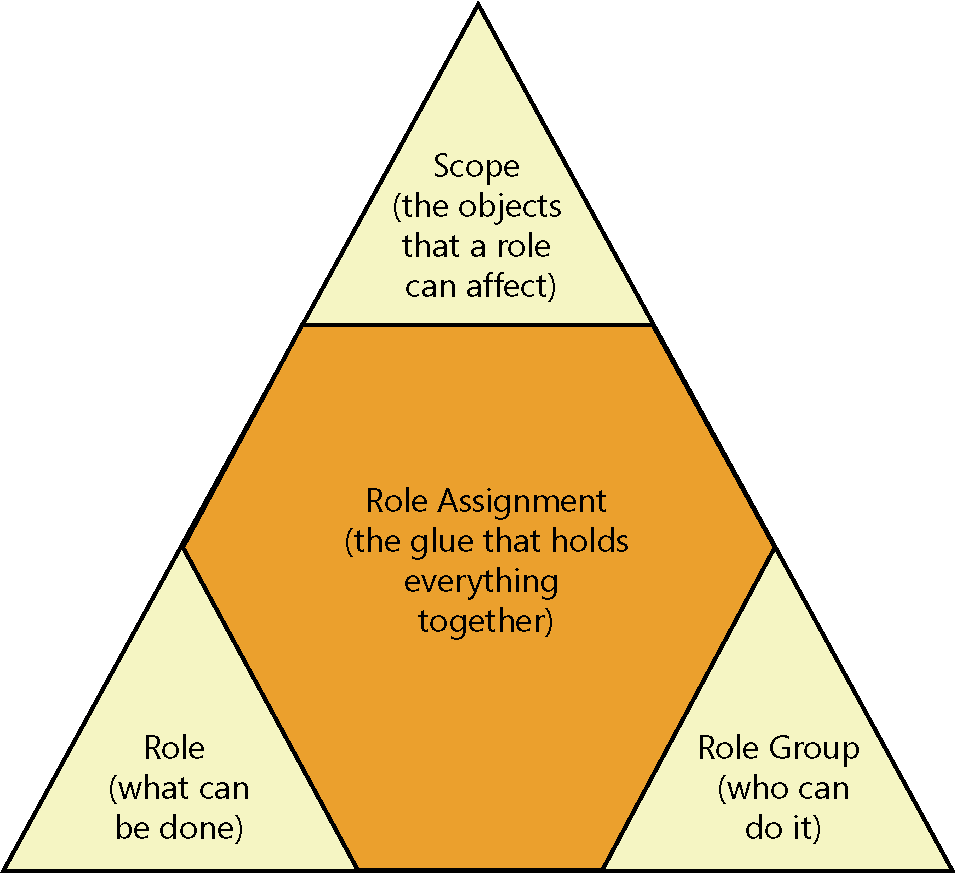RBAC basics
RBAC in Exchange is often described in the form of a triangle (Figure 4-1) to show how roles, role groups, scopes, and assignments fit together.

Figure 4-1. The RBAC triangle
These are the major elements of RBAC as implemented in Exchange:
Management role. A collection of role entries that define the set of cmdlets and parameters a user can run. For example, the Mailbox Import Export role permits users to import or export mailbox data to and from PSTs.
Management role group. A container for a group of management role entries that collectively enable a user to function in a role such as recipient management. Exchange includes a default set ...
Get Microsoft Exchange Server 2013: Mailbox and High Availability now with the O’Reilly learning platform.
O’Reilly members experience books, live events, courses curated by job role, and more from O’Reilly and nearly 200 top publishers.

